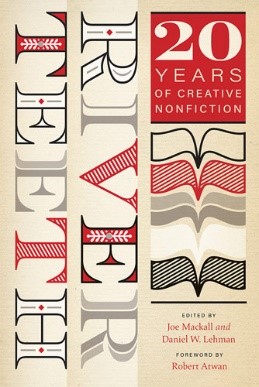Not long ago I had the occasion to write the Editor’s Notes for River Teeth: A Journal of Nonfiction Narrative, the creative nonfiction journal a colleague and I have edited since 1999. I wrote on April 22, but knew the production and printing typical for these sorts of journals would mean my notes would not appear for some six months. I found myself consumed by the Covid-19 crisis that April morning. It seemed impossible to ignore it. After all, we writers want to write about what matters, and this matters very, very much. But I could hardly imagine what to write. What would the world be like six months later when my words were read?
The world as I’d known it had changed. Startlingly. Like many, I am locked down, masked, wary, guarding my six feet radius. Outside, I’m still active, but usually alone. I swerve from the path when others approach, always watching, always calculating, always distanced. Yes, I notice somewhat cleaner air when I run or ride, and the early morning city streets are very nearly empty except for my bicycle, but I’m desperately missing that mid-ride conviviality with friends at my elbow. Missing much more actually. Missing touch, missing family, missing the sheer joy of spontaneity, making it up as one goes along without fear of consequence.
So I wondered. What will the world be like when my words were read? Will the shocks and shut-downs of spring 2020 be mostly a memory, some troubling dream from which we awaken? Or will contagion sweep unabated, ushering a soul darkness and earth cataclysm about which we have been repeatedly warned and usually ignore.
I wonder.
Were this a novel instead of a novel coronavirus I could write that wonder into my own ending. Imagine six months hence and work it out on the page. Fiction allows that liberty, that destiny, though of course it carries its own internal logic and responsibilities. But it’s there. You can dream a fictional ending if you have the talent to make it true — build its story as both surprising and inevitable. Nonfiction not so much. We now seem tied as characters to a story whose ending we cannot yet know. Or perhaps you the reader, yes you right there, reading this page right now, may decipher a story line I cannot know today.
Forgive me, but these are the sorts of thoughts that haunt me — especially when I think about the difference between fiction (which I have taught for nearly three decades) and nonfiction (where I started as a journalist so many decades ago and developed into an academic and creative specialty). Here’s the thing about a true story. While we cannot easily claim a direct correspondence between facts and nonfiction (some selection is always crucial; memories fail; interpretations vary; subjective evaluation is a given), yet there remain critical distinctions between fiction and nonfiction.
Here’s one distinction: We are now all characters in this Covid-19 story that is unfolding around us. We have the ability, in some small way, as characters to write our part of the story. The actions we take—whether distancing, offering support to the challenged, brightening a corner, speaking straight truth to blind power—serve in small or large ways to affect the overall arc of the story. We are implicated as characters in this unfolding nonfiction novel coronavirus, it would seem. How will it end? How many will die? How many lives will be damaged? The arc of it seems so far beyond our ken. But the power of nonfiction means we cannot easily dodge it. “If Pain wore a ring,” the essayist Brenda Miller wrote in the River Teeth edition for which I wrote those notes, “It might have been a rhinestone, sharp-faceted, false glitter of diamond intensity.”
Miller celebrates nonfiction’s power to get at truth beyond the page: “If you succeed, you and the reader will find yourself in a close, if not intimate, relationship that demands honesty and a willingness to risk a kind of exposure you may never venture in face-to-face encounters.”
Close . . . Intimate . . . Relationship . . . Risk . . . Exposure. Loaded words these are in this plague year, yet a light for our pathway: right here, right now.

Credits:
Miller, Brenda. “Pain Song.” River Teeth: A Journal of Nonfiction Narrative. 22.1. Fall. 2012.
Miller, Brenda and Suzanne Paola. Tell It Slant: Creating, Refining, and Publishing Creative Nonfiction, 2nd Ed. 2012.
For more information on River Teeth: A Journal of Nonfiction Narrative, please visit https://www.riverteethjournal.com/ or order River Teeth: 20 Years of Creative Nonfiction from the University of New Mexico Press at https://unmpress.com/books/river-teeth/9780826361394 or from Amazon at https://www.amazon.com/River-Teeth-Twenty-Creative-Nonfiction/dp/0826361390.

